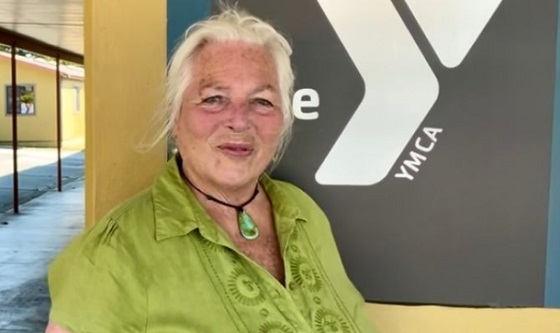Alberta
Province Bighorn Country public info sessions are on again

From the Province of Alberta
Bighorn Country public info sessions restart
The Provincial Government has rescheduled four public information sessions on the Bighorn Country proposal for Feb. 1 – 4.
In order to ensure Albertans have information on the proposed mix of parks and public lands in the Bighorn region, public information sessions are now scheduled for Drayton Valley, Edmonton, Red Deer and Sundre. Participants will have the opportunity to talk to program staff, view maps of the region, and submit feedback directly at more than 30 information stations.
“Many Albertans are deeply passionate about the Bighorn – that’s why we are consulting with all Albertans on a proposal for Bighorn Country. Already, we’ve engaged more than 50,000 Albertans and restarting these information sessions will allow us to reach even more. These sessions will make sure Albertans can ask questions, learn more about the proposal and share their views.”
Public information sessions will be held:
Drayton Valley
Friday, Feb. 1
Clean Energy Technology Centre Map
5400 22 Avenue
Drayton Valley
4 p.m. – 7 p.m.
Edmonton
Saturday, Feb. 2
Polish Hall Map
10960 104 Street
Edmonton
1 p.m. – 4 p.m.
Red Deer
Sunday, Feb. 3
Westerner Centre Map
4847A 19 Street
Red Deer
1 p.m. – 4 p.m.
Sundre
Monday, Feb. 4
Royal Canadian Legion Map
135 6 Street SE
Sundre
4 p.m. – 7 p.m.
Each of the sites have undergone a safety and security review. People can also review the proposal and provide feedback online by visiting talkaep.alberta.ca. The deadline for submitting feedback is Feb. 1
Quick facts
- Bighorn Country includes public lands from the boundary of Banff National Park eastward towards Drayton Valley. It includes Clearwater County, most of Brazeau County and the current Bighorn Backcountry management area.
- The Bighorn region is recognized for its scenic beauty and natural diversity. It includes scenic mountains and foothills, rare plants and key habitat for numerous species at risk such as grizzly bear, wolverine, harlequin duck, Athabasca rainbow trout and bull trout.
- The headwaters of the North Saskatchewan River and Red Deer River are located within Bighorn Country, providing clean drinking water to more than one million Albertans.
- Sharing this busy landscape is a wide variety of recreation and tourism activities. Hunting and fishing are popular, as well as camping, hiking, off-highway vehicle use, horseback riding, ice climbing and cross-country skiing.
- The Bighorn Country proposal includes new, expanded or amended parks, protected areas and public land use zones. This system of public lands is intended to provide a range of opportunities that suits the settings and demands of the region.
- The proposal means no significant change to recreation activities, but offers $40 million in new investment to improve services and infrastructure such as campsites, parking lots, trails and staging areas.
- The proposal supports continued practice of traditional uses and the exercise of treaty rights by Indigenous Peoples.

Tourism Development
Tourism is an important contributor to the region’s economy and Bighorn Country possesses unrealised tourism potential.
Modifying existing land designations could provide for different types of tourism development. Combined, these could support new opportunities, directly bene tting businesses and the local economy. Appropriate commercial recreation and tourism development could be identi ed through the parks planning process, including public consultation and engagement.
Bighorn Wildland Provincial Park
• Would conserve nature and allow low-impact backcountry recreation activities and services provided by both the public and private sectors.
• Focus on high-quality hunting, shing and other nature-based recreation experiences.
• Equestrian and off-highway vehicle use would continue, where appropriate, on designated trails.
Snow Creek Provincial Recreation Area
- Minor expansion would allow development of winter tourism activities, potentially including a Nordic ski trail system.
- Could provide a staging area for snowmobiles to access adjacent trails.
Kiska-Willson Public Land Use Zone
- Would continue to provide a large network of trails for motorized and non-motorized use.
- Would continue to support exploration for, and development of, coal, limestone and other resources.
- The northern portion would provide commercial recreation and tourism opportunities, while the southern portion would focus on low-impact backcountry recreation and tourism.
West Country Public Land Use Zone
- Trails and camping areas would remain open. Future recreation management planning is needed to thoughtfully manage impacts of recreation activities on other land uses and the environment.
- Would continue to permit industrial uses, such as forestry and energy, and existing public land recreation areas would remain.
- Recreation planning may include new trails, staging areas and other infrastructure, including support for commercial recreation and tourism development.
Bighorn Dam Provincial Recreation Area
- Focus would be on providing trails, staging areas and campgrounds to suit different recreation and tourism uses.
- OHV and snowmobile use would be permitted on designated trails, and a staging area would link campgrounds to the existing trail network in surrounding areas.
Hummingbird Provincial Recreation Area
- An important campground and staging area that provides access to the Bighorn Wildland Provincial Park or the Kiska-Willson Public Land Use Zone.
- Focus would be on providing trails, staging areas and campgrounds to suit different recreation and tourism uses.
Shunda Provincial Recreation Area
- Would expand and consolidate Fish Lake and Goldeye Lake Provincial Recreation Areas.
- Focus would be on maintaining, enhancing and providing new facilities and infrastructure to suit diverse recreation and tourism uses.
David Thompson Provincial Park
• Would incorporate the Thompson Creek and Kootenay Plains Provincial Recreation Areas and the Kootenay Plains Ecological Reserve.
• Would offer a number of front country experiences and connect visitors with the Bighorn Wildland Provincial Park.
• Focus would be on developing services, facilities and infrastructure to support current and future demand for recreation and tourism opportunities while prioritizing conservation.
North Saskatchewan River Provincial Park
- Would protect important natural landscapes that are unique to Bighorn Country.
- Would provide opportunities for water-based recreation, hiking, mountain biking and equestrian uses.
- Parks management planning would help determine the need for speci c trails and infrastructure to support conservation, recreation, tourism and education.
Ya Ha Tinda Provincial Park
• Ya Ha Tinda Provincial Park contains diverse landscape types and a wide range of experiences.
• It is an important staging area for the Bighorn Wildland Provincial Park, providing access for equestrian and other recreational uses.
Have Your Say Today
Visit talkAEP.alberta.ca today to give us your feedback on the Bighorn Country proposal.
Consultation will be open from November 23, 2018 to January 31, 2019. Over this period, we will gain your input on the future of the Bighorn area.
If we proceed, further consultation would be held to inform recreation and management planning.
Alberta
Alberta Next: Alberta Pension Plan

From Premier Danielle Smith and Alberta.ca/Next
Let’s talk about an Alberta Pension Plan for a minute.
With our young Alberta workforce paying billions more into the CPP each year than our seniors get back in benefits, it’s time to ask whether we stay with the status quo or create our own Alberta Pension Plan that would guarantee as good or better benefits for seniors and lower premiums for workers.
I want to hear your perspective on this idea and please check out the video. Get the facts. Join the conversation.
Visit Alberta.ca/next
Alberta
COVID mandates protester in Canada released on bail after over 2 years in jail

Chris Carbert (right) and Anthony Olienick, two of the Coutts Four were jailed for over two years for mischief and unlawful possession of a firearm for a dangerous purpose.
From LifeSiteNews
The “Coutts Four” were painted as dangerous terrorists and their arrest was used as justification for the invocation of the Emergencies Act by the Trudeau government, which allowed it to use draconian measures to end both the Coutts blockade and the much larger Freedom Convoy
COVID protestor Chris Carbert has been granted bail pending his appeal after spending over two years in prison.
On June 30, Alberta Court of Appeal Justice Jo-Anne Strekaf ordered the release of Chris Carbert pending his appeal of charges of mischief and weapons offenses stemming from the Coutts border blockade, which protested COVID mandates in 2022.
“[Carbert] has demonstrated that there is no substantial likelihood that he will commit a criminal offence or interfere with the administration of justice if released from detention pending the hearing of his appeals,” Strekaf ruled.
“If the applicant and the Crown are able to agree upon a release plan and draft order to propose to the court, that is to be submitted by July 14,” she continued.
Carbert’s appeal is expected to be heard in September. So far, Carbert has spent over two years in prison, when he was charged with conspiracy to commit murder during the protest in Coutts, which ran parallel to but was not officially affiliated with the Freedom Convoy taking place in Ottawa.
Later, he was acquitted of the conspiracy to commit murder charge but still found guilty of the lesser charges of unlawful possession of a firearm for a dangerous purpose and mischief over $5,000.
In September 2024, Chris Carbert was sentenced to six and a half years for his role in the protest. However, he is not expected to serve his full sentence, as he was issued four years of credit for time already served. Carbert is also prohibited from owning firearms for life and required to provide a DNA sample.
Carbert was arrested alongside Anthony Olienick, Christopher Lysak and Jerry Morin, with the latter two pleading guilty to lesser charges to avoid trial. At the time, the “Coutts Four” were painted as dangerous terrorists and their arrest was used as justification for the invocation of the Emergencies Act by the Trudeau government, which allowed it to use draconian measures to end both the Coutts blockade and the much larger Freedom Convoy occurring thousands of kilometers away in Ottawa.
Under the Emergency Act (EA), the Liberal government froze the bank accounts of Canadians who donated to the Freedom Convoy. Trudeau revoked the EA on February 23 after the protesters had been cleared out. At the time, seven of Canada’s 10 provinces opposed Trudeau’s use of the EA.
Since then, Federal Court Justice Richard Mosley ruled that Trudeau was “not justified” in invoking the Emergencies Act, a decision that the federal government is appealing.
-

 International2 days ago
International2 days agoWoman wins settlement after YMCA banned her for complaining about man in girls’ locker room
-

 Alberta1 day ago
Alberta1 day agoAlberta government records $8.3 billion surplus—but the good times may soon end
-

 Opinion2 days ago
Opinion2 days agoBlind to the Left: Canada’s Counter-Extremism Failure Leaves Neo-Marxist and Islamist Threats Unchecked
-

 MxM News1 day ago
MxM News1 day agoDiddy found not guilty of trafficking, faces prison on lesser charge
-

 Banks2 days ago
Banks2 days agoWelcome Back, Wells Fargo!
-

 Bruce Dowbiggin1 day ago
Bruce Dowbiggin1 day agoCanada Day 2025: It’s Time For Boomers To Let The Kids Lead
-

 Also Interesting1 day ago
Also Interesting1 day agoEndorphina Slots: High-Quality Games Now at Zoome Casino Canada
-

 Business1 day ago
Business1 day agoPrairie provinces and Newfoundland and Labrador see largest increases in size of government






